This day in America is celebrated as Decoration Day….or now known as Memorial Day. This is a day to celebrate, honor and memorialize all of our deceased ancestors that have served in the military. While the “exact” origins of Memorial Day aren’t clear, one of the first days of remembrance was in 1868, post Civil War. For this reason, I haven chosen to focus on the life and death of one of my ancestors that served and gave his life for the cause.
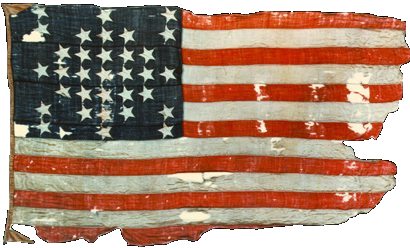
Our story follows Fritz Harbou, a dear soul born to Frederik Hans Walter Harbou and Ana Marie Prætorius on the 30th of January 1814 in Copenhagen, Denmark. In 1840 he leaves his mother, 3 brothers and one sister behind to go to America. Having sailed on the Franklin, he arrives on the 2nd of March 1840 and settles in New York state. He makes his living as an architect and craftsman.
While the details are unknown to me, by 1844 he is living in Mohawk, Montgomery, New York and he meets Judith Fritcher. She is the daughter of John F. Fritcher and Jane Hogle of Fonda, Montgomery, New York, born 19 February 1826. They marry there on the 15th of May 1844 with her father John and sister Henrietta Fritcher Gibson witnessing the marriage certificate.
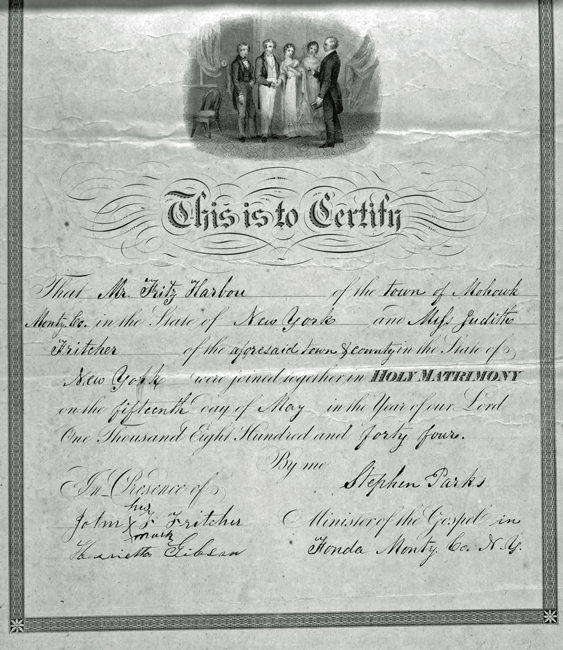
At some point, Fritz and Judith move (or remove, as they used to say) to Canandaigua, Ontario, New York. While they were never considered to be in the upper crust or wealthy sect, it would seem that they were highly respected and involved individuals. According to a newspaper account from the Ontario Times-Journal in 1951:
The man who designed and carved the statue of Justice was Fritz Harbou who lived in Chapin Street in Canandaigua and who worked with Josiah Searles. This was in the summer of 1857.
The story told by his granddaughter, the former Miss Mildred Harbou of Macedon, is that Fritz Harbou came from his native Denmark in the late 1840s as a boy with his parents. They lived for a brief time at Clifton Springs and then moved to Canandaigua. Like his father, he was a wood craftsman of ability. Mr. Searles favored placing a statue on top of the stately dome of the courthouse and Fritz Harbou agreed to carve a satisfactory figure. He cut timbers in the town of Hopewell, so the story goes, and he moulded the statue in his barn. The work took him three weeks.
While some of the details (he didn’t come in late 1840 or with his parents and he wouldn’t have been a young boy) it does appear that the rest is accurate. While the carving of the Lady Justice statue might not be such a big deal on its own, the fact that this is the very courthouse where Susan B. Anthony was convicted of voting for president does tend to raise the interest of the descendants (and others). For more on this statue and the trial, this historical synopsis proves interesting.
By 1857 the rumblings of war between the states was becoming more than just saber rattling. Judith and Fritz were busy with their four children and like most families in this day and time, they had already buried one. As the battle cries grew into a crescendo, two more children were added to the family and one more lost. In 1861 there was no more talk and only action. On 24 October 1861, Fritz joined the Union army and was mustered out on 29 October 1861 as a Private 1st NY Volunteers Engineer Regiment, Company G. For more information on this regiment, grab a dose of Wikipedia.
Fritz proudly marched off in defense of his new found country, looking dapper in his uniform. You can even tell that he had piercing blue eyes, despite the black and white cart de visite.
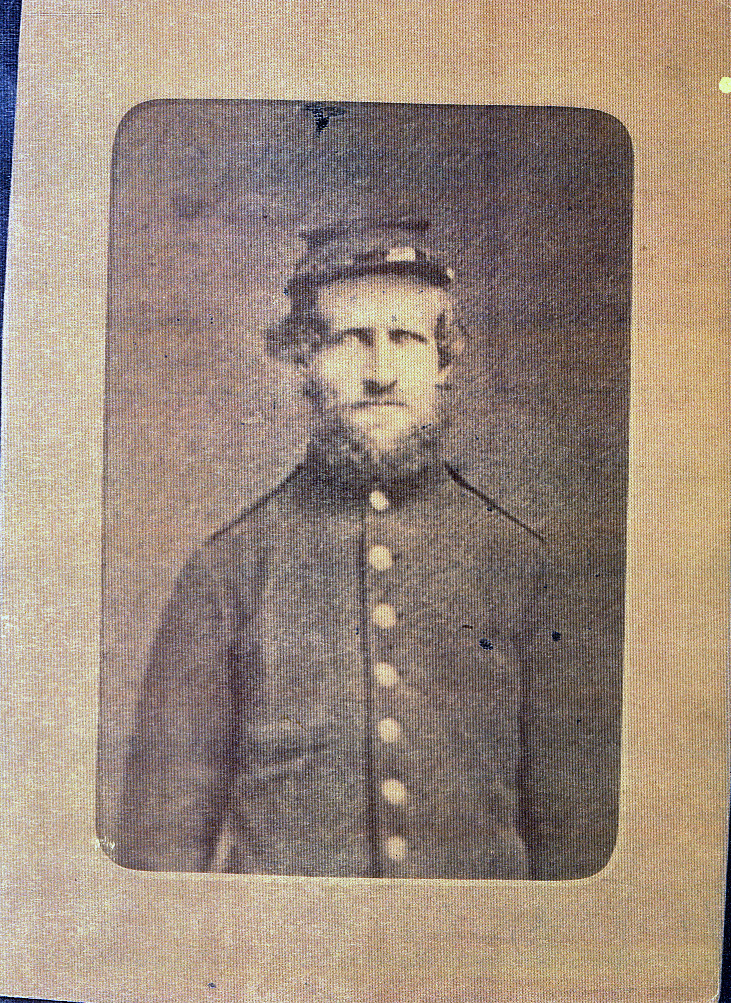
While in Port Royal, South Carolina, Fritz contracted dysentery and died on 23rd March, 1862 leaving his wife and four children under the age of 16. The company captain wrote to a family friend and directed them to notify Judith of Fritz’s death. A portion of that letter is below:
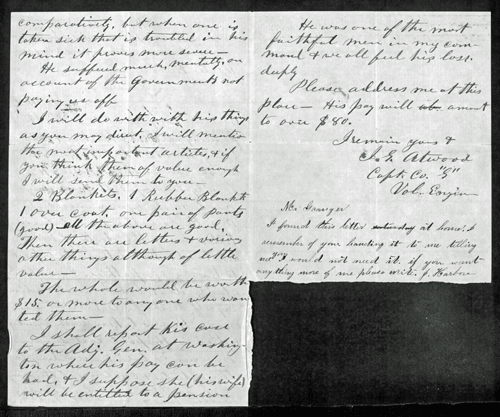
The youngest child Minnie was just 3 years old when her mother passed away on 31 Oct 1863. What a terribly sad time for the Harbou and Fritcher families.
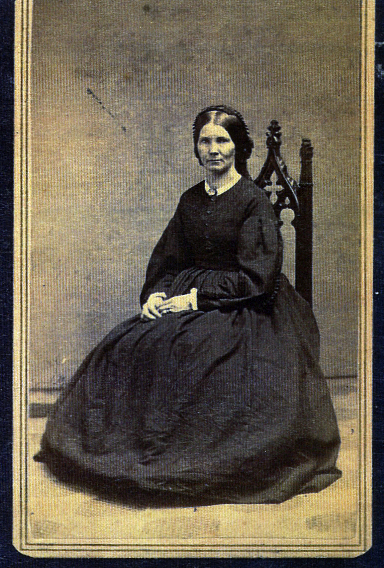
Because of the death of both parents and the benefits due for the care of the minor children, Fritz’s service packet is full of information concerning birth dates, names, places and paperwork. It truly is a treasure trove.
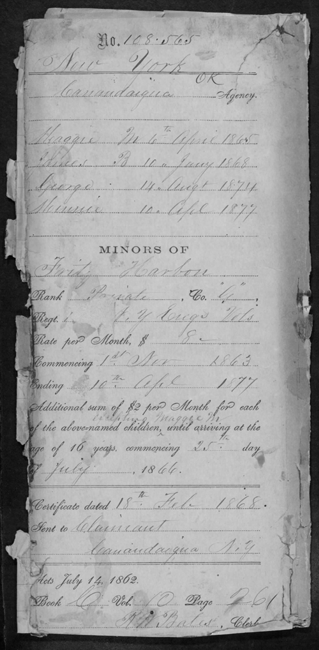
The guardian of the four minor children was Avery Hemmenway, husband of Jane “Jennie” Fritcher Hemmenway. Jennie was the younger sister of Judith. Avery was a lawyer and he spent a great deal of time gathering affidavits and supporting evidence of the children’s vital statistics simply for the great reward of $2.00 per child per month. I thank him for his thoroughness, so that we have the benefit of this collected evidence.
Fritz rests quietly in the national cemetery in Beaufort, South Carolina. Several years ago I requested that a dear friend of mine stop by the cemetery to take a photo of his headstone while she was visiting family in Beaufort. She kindly obliged and told me that he is at the end of a row, shadowed by a huge old oak. While I can’t be there to decorate the grave of this soldier this Memorial Day, I can only hope that someone will. He certainly isn’t forgotten.
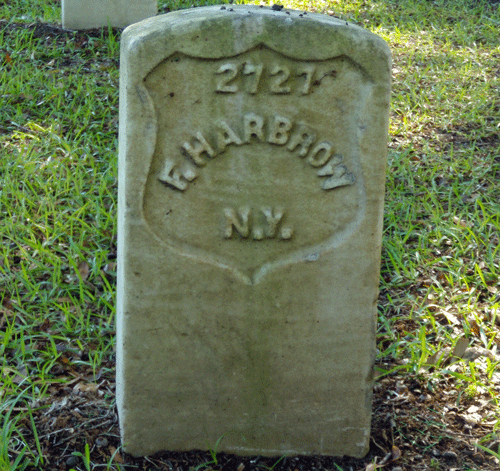
Pingback: Postbox Surprise - B's Treehouse
Last year I traveled with the League of Women
Voters to upstate New York to visit the epicenter
of the women’s rights movement. I visited the
home of Susan B. Anthony and I saw the courthouse
where she was tried. Since many of my relatives lived
in the area I wondered what they thought of
these brave suffragette women. Little did I know that .. My ancestor
sculpted the figure atop that very courthouse where Susan B. Anthony was tried!!! How very cool to make that connection!
Thanks again Becky for your amazing sleuthing skills!
You never cease to amaze me!!